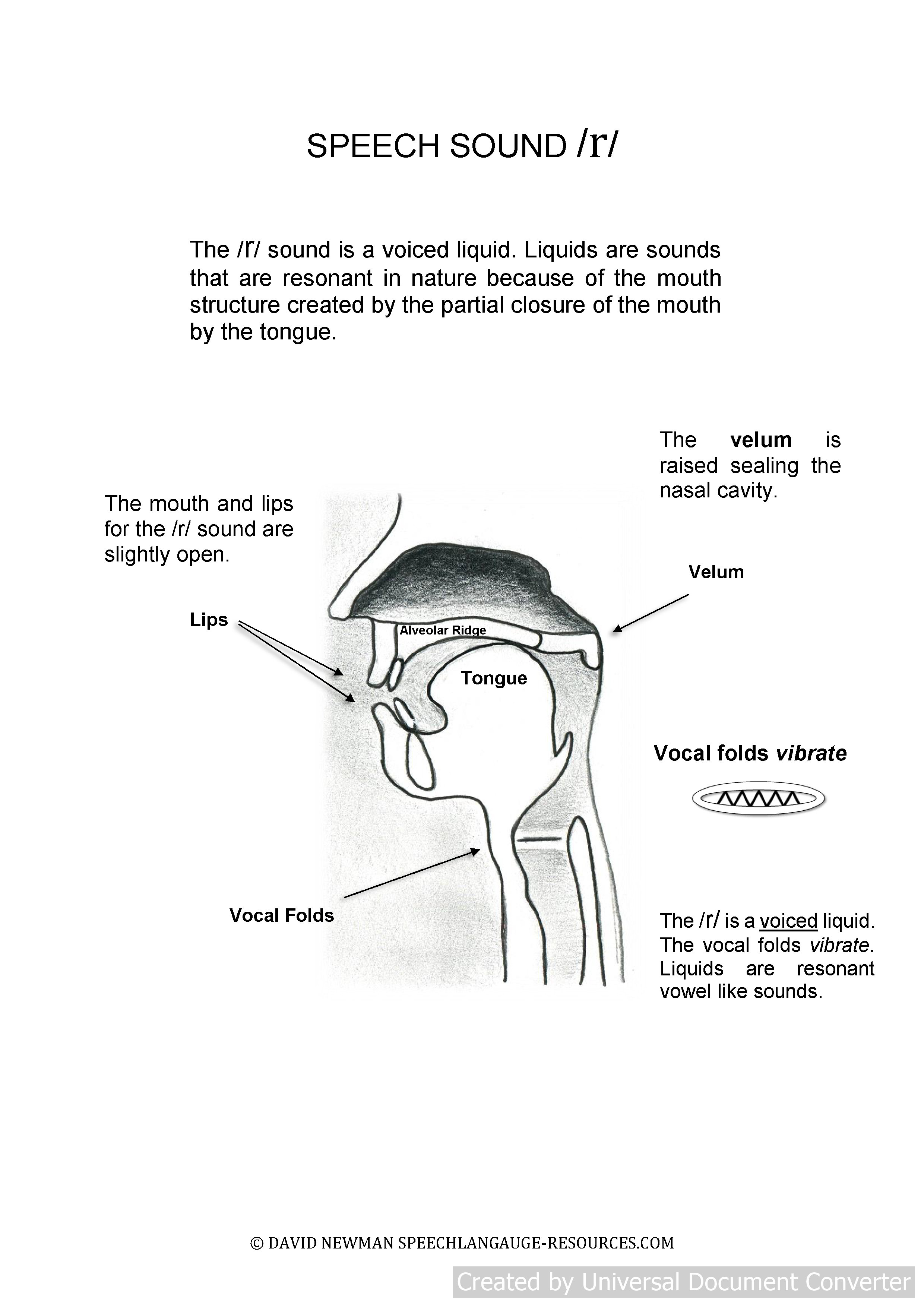Speech Therapy r Sound

Speech Therapy r Sound: The /r/ phoneme is a voiced liquid sound. The air-stream flows over the top of the tongue and then out the mouth. The tongue does not actually touch any oral structures and it is elevated near to the palate (roof of mouth).
The tongue tip is very close to the alveolar ridge but does not contact the ridge at any point. The /r/ phoneme is referred to as a palatal glide. This is due to the fact that the air-stream flows through a narrow gap between the top of the tongue blade and the palate, which give the sound a resonant, vowel like quality.
Speech Therapy r Sound - Sound Errors
A common sound error is when the /r/ sound is misarticulated as /w/. For instance, the boy ran on the road, becomes the boy wan on the woad. Another common /r/ error is the /r/ sound produced as a /j/.
Speech Sound Structures - /r/ Sound
Click on image to download speech sound structures /r/
Speech Therapy r Sound - How to stimulate the /r/ sound
- Demonstrate to the child what a typical /r/ sounds like. Do this by sustaining the /r/ sound and then explain to the child that the /r/ sound is made by the tongue being slightly at the back and in the middle of the mouth. Emphasize that the tongue doesn't touch any structures in the mouth, but is close to the top of the mouth.
- A useful technique to use is to hold your left hand in a flattened position with the palm facing down. Next, place your right hand beneath the left hand so that the palms face each other. The left hand represents the hard palate and the right hand beneath the left hand represents the tongue. With your right hand curl the fingers up so that they almost touch the palm of the left hand. Explain to the child, this is what your tongue needs to do for the /r/ sound.
- Also demonstrate to your child the contrast in mouth shape and movement between the /r/ and /w/ phonemes. The /w/ uses a large mouth movement and the tongue lies virtually still, whereas during /r/ production the mouth is just slightly open and moves very little while the tongue curls.
/r/ Sound stimulation
Work through the following procedures with your child.
- Instruct your child to raise the tongue so that the tip is just beneath the alveolar ridge, but not actually touching that structure.
- The main body of the tongue is then raised high in the mouth without touching any structure.
- The voiced air-stream is then directed over the tongue.
- The velum is closed and the vocal folds vibrate.
Speech Therapy r Sound - Sculpting from other Speech Sounds
Many speech sounds can be sculpted using other speech sounds as a starting point. This involves altering or adjusting speech sounds so that they approach the target sound in nature. This works by the clinician modeling a sound that the child is able to produce. The clinician then makes slight, progressive adjustments to the sound until the target sound is generated.
Sound sculpting from the /n/ sound
- The /r/ sound can be shaped from the /n/ sound. This is because the tongue position for /n/ production is similar to the /r/ sound once the tongue has released.
- After /n/ production, instruct your child to slightly retract the tongue to the rear of the mouth for /r/ production.
- Instruct your child to produce /na/ followed by /ra/ in an alternating sequence, /na/ /ra/ /na/ /ra/, etc.
Sound sculpting from the /t/ sound
- Similar to the /n/ sound the /r/ can be shaped from the /t/ sound. The tongue position for /t/ production is similar to the /r/ sound once the tongue has released.
- After /t/ production, instruct your child to slightly retract the tongue to the rear of the mouth for /r/ production.
- Instruct your child to produce /ta/ followed by /la/ in an alternating sequence, /ta/ /ra/ /ta/ /ra/, etc.
Updated 20/08/2020

